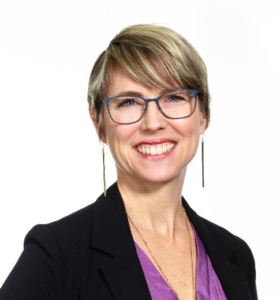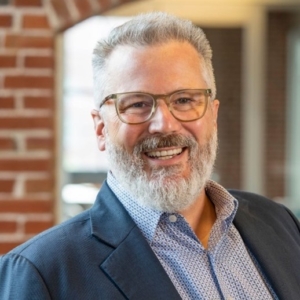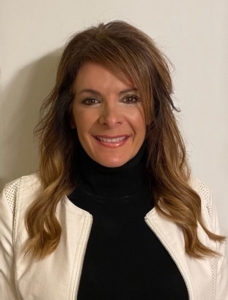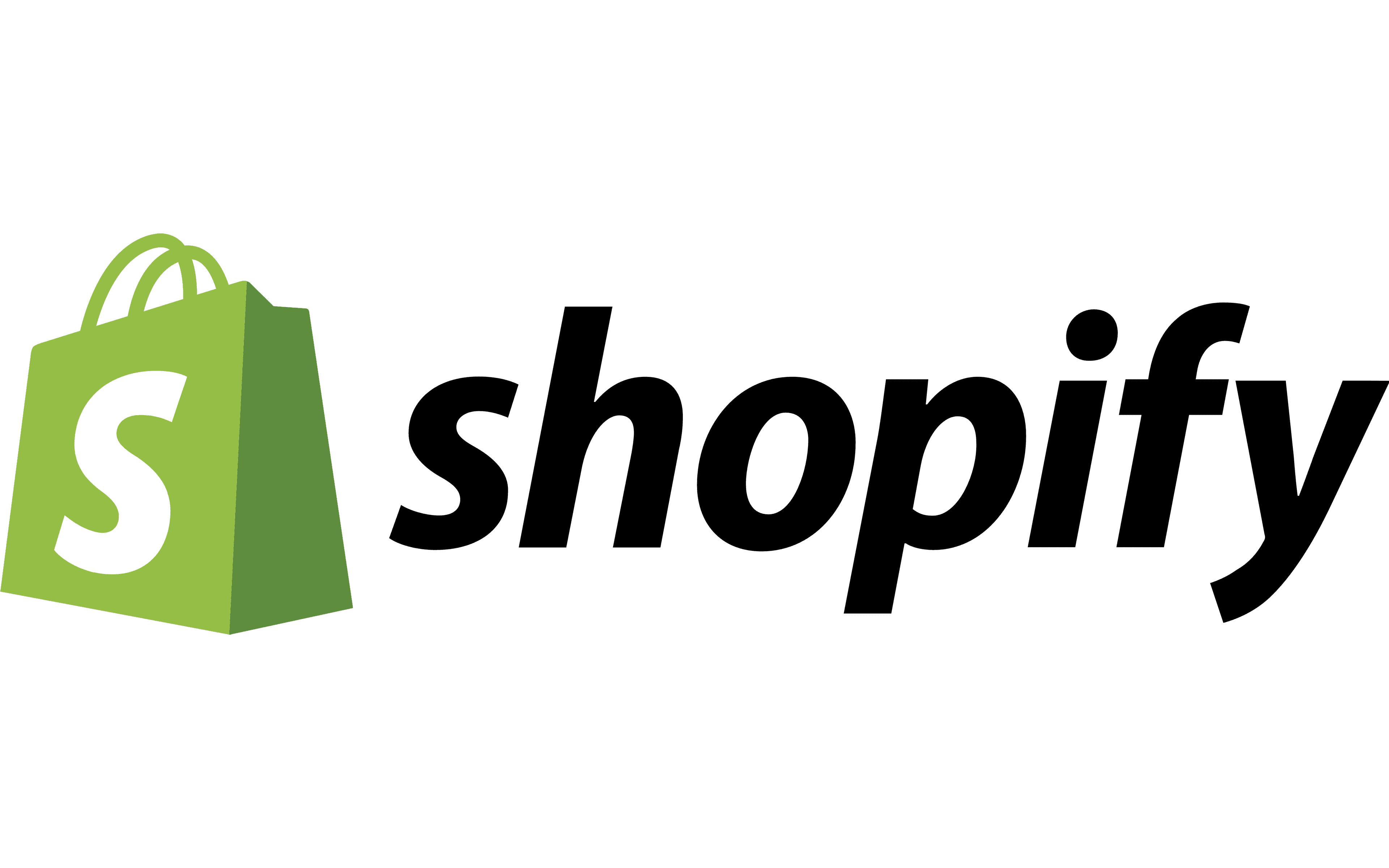When President Joe Biden landed in Rome on October 29th for the summit of G20 nations, he represented the only G20 member with no paid family leave or national childcare policy, and one of only two members – the other being Indonesia – without universal access to healthcare.
The national debate regarding such “social infrastructure” issues continues within the context of the Build Back Better Act, which, if enacted, would improve circumstances on each front, if only a little. The House version of the legislation passed on November 19th, for example, would provide paid family leave of only four weeks – down from the originally proposed 12 weeks, which was already stingy by international standards. Globally, the average paid maternity leave is 29 weeks and the average paid paternity leave is 16 weeks, according to the World Policy Analysis Center at UCLA.
Passage of the Act by the Senate remains highly uncertain; not one Republican Senator supports the legislation, with some calling its social infrastructure provisions “socialism,” and two critical Democrats, Senators Kyrsten Sinema (D-AZ) and Joe Manchin (D-WV), continue to oppose the size of the legislation. Senator Manchin opposes the inclusion of paid family leave at all.
But the charge that policies like universal healthcare, paid family leave, and national childcare are “socialism,” or at least socialistic, stands in stark contrast to their importance to something quintessentially capitalistic and American – entrepreneurship.
The United States is the world’s most entrepreneurial nation – it’s in our blood, our national DNA. The American experiment of self-governance itself is a profoundly entrepreneurial undertaking, grounded in the new-world spirit of freedom, adventure, and a willingness – even eagerness – to strike out on one’s own and create something new. That entrepreneurial spirit, and the countless new companies it has spawned, have built the most innovative and productive economy in the history of the world.
Repeated research in recent years has demonstrated that new businesses – “startups” – account disproportionately for the innovations that drive productivity growth, economic growth, and net new job creation.
And yet, alarmingly, research conducted over the past decade has demonstrated that American entrepreneurship is in decline. After remaining remarkably consistent for decades, the number of new businesses launched in the United States peaked in 2006 and then began a precipitous decline – a decline accelerated by the Great Recession.
According to the U.S. Census Bureau, from 2002 to 2006 an average of 524,000 new employer firms were launched each year. Between 2009 and 2019, however, the number of new businesses launched annually dropped to about 400,000, meaning the United States experienced a startup deficit of more than 100,000 new firms every year – a million missing startups over that 10-year period.
Even more alarming, economists Robert Litan and Ian Hathaway have shown that rates of entrepreneurship – the fraction of all U.S. businesses that are new – have fallen near a four-decade low, and that this decline is occurring in all 50 states, in all but a handful of the 360 metro areas they examined, and across a broad range of industry sectors.
The U.S. economy is becoming less entrepreneurial, more concentrated among large incumbent companies, less “dynamic.”
Yes, the Covid-19 pandemic has sparked an intriguing spike in new business applications, but the increase is largely due to entrepreneurship of necessity – when 22 million people suddenly lose their jobs, many will start a new business – and a large portion of the new businesses established since March of 2020 are not the innovative, scalable, high impact disruptors that drive innovation, economic growth, and job creation.
At roundtables that we at the Center for American Entrepreneurship regularly conduct to stay in close touch with America’s entrepreneurs and the challenges they confront, four topics invariably come up: healthcare, childcare, student debt, and retirement security. Each represents a major risk for would-be entrepreneurs inclined to launch a new business and a major obstacle to attracting and retaining the skilled talent new businesses need to survive and grow.
To learn more about these “life risks” and their impact on American entrepreneurship against the backdrop of the ongoing Build Back Better Act debate, we conducted a roundtable focused specifically on those issues on October 29, 2021 with ten entrepreneurs from six states. Their candid comments, shared experiences, and remarkable insights – presented below in their own words, unedited, and with their permission – reveal just how critical these issues are to America’s entrepreneurs and innovators, and how high the stakes really are as policymakers continue to debate potential solutions.
Healthcare
By leaving a corporate job to launch a new business, entrepreneurs walk away from employer-provided healthcare at great financial risk to themselves and their families. And whether to cover healthcare insurance for their employees is one of the first major decisions entrepreneurs have to make. Our roundtable participants have navigated the issue in various ways: some went without healthcare insurance for themselves and their employees, at least initially; some sought out the cheapest out-of-pocket plan they could find; others shopped through third parties or in “Obamacare” (Affordable Care Act) marketplaces; one joined a shared-costs community; and one decided to fund healthcare insurance for themselves and their employees from day one.
Monica Landers, founder and CEO of Austin, TX- and Los Angeles, CA-based StoryFit, which provides artificial intelligence insights and machine learning solutions for the book publishing, movie, and television production industries: “The issues I run into most in my startup are healthcare and childcare. My young employees are subsidized by their parents, while my older and more experienced people have made money and have some financial bandwidth. Everyone in the middle has a spouse who has better healthcare.”

Monica Landers, founder and CEO of StoryFit
“We provide healthcare for individuals, but not their families, which I feel horrible about, but is very competitive here in Austin. We use a third-party provider who shops around and gives us a couple of options, the costs of which went up tremendously again this year.”
Bek Abdullayev, founder and CEO of Kansas City, MO-based Super Dispatch, a SaaS-enabled digital shipping platform for moving cars: “In the early years I relied on my wife’s healthcare as my new business couldn’t afford it. It’s very difficult for a new business to offer these benefits from the get-go.”

Bek Abdullayev, founder and CEO of Super Dispatch
“But as the company took off and we began scaling and hiring lots of people, healthcare became a big issue. In order to acquire and retain the talent we needed, healthcare and retirement benefits became key. Without these key components, we couldn’t compete.”
Catherine Berman: co-founder and CEO of CNote, a San Francisco, CA-based woman-led fintech platform that assists corporations and other clients in making community investments that promote racial justice and women’s empowerment: “My husband is a sole proprietor so in the early years we didn’t have a larger company to lean on for healthcare. We used out-of-pocket plans over the first couple of years. We also took advantage of the affordable Obamacare plan options that were offered in California. Fortunately, as the business progressed, we were able to get back on our original plan. The pressure that we really felt was for our kids. When it was just my husband and me, we weren’t committed to one doctor or specialist. But when your kids start going to a doctor who gets to know their issues, you’re not excited to change.”

Catherine Berman, co-founder and CEO of CNote.
“I also think about this issue very much in the context of the communities we serve at CNote – the many entrepreneurs of color that we fund. We know that entrepreneurship is one of the great opportunities for wealth creation, but if someone in the family doesn’t work for a more mature company, how do they manage access to affordable healthcare so that they can create wealth for their family and community? It’s a stark choice for many entrepreneurs of color: ‘Do I provide healthcare for my kids, or do I take a step toward economic freedom by becoming an entrepreneur?’ How can we as a nation make that choice easier?”
Kayla Rodriguez Graff, co-founder and CEO of Memphis, TN-based SweetBio, a health and wellness medical device company specializing in bioengineering honey-incorporated materials for wound care. “When we launched the company, we made the decision to do full healthcare for our employees and pay market-rate salaries, and I learned a lot of lessons from that experience. We went to a provider and were able to get coverage for our whole team. Our thinking was that if our employees were worried about themselves or their families, they couldn’t do their job. We went to our investors and said this is something we have to do. We were able to get the capital, but it really upped the pressure on me as CEO and the whole team to perform because we were burning through so much money. But we were very transparent with our investors and told them: “If we want this company to succeed, we have to pay for the people we need.”
Stephanie Jarrett, co-founder of Lincoln, NE-based Bulu, which manages subscription box and ecommerce fulfillment programs for large companies: “We started out with little to nothing in terms of healthcare and retirement. The first priority in our first few years was to get market competitive with our salaries and wages. When we achieved that we moved on to healthcare. We offered a plan that covered our employees, but not their families – but it was a good starting point. And then just in the last year, we started offering a 401(k).”

Paul and Stephanie Jarrett, co-founders of Bulu.
“So, we’ve been improving over time. We have a wide range of employees, from hourly employees still finishing up their GED who want to get paid weekly to more advanced professionals who are more interested in benefits like healthcare and retirement security. So, our challenge has been how to offer the right benefits to a wide range of employee categories and situations.”
Brooke Mullen, founder and CEO of Sapahn, a Lincoln, NE-based ethical fashion brand that crafts luxury leather bags and accessories that are produced consistent with human rights: “We design and build beautiful fashion accessories, mostly sourced from Thailand, relying on 300 artisans, 95 percent of which are women. We have a small team of female employees in the United States and their priorities are healthcare and childcare. The needs of each employee are quite different, so we have them shop around and then Sapahn provides a stipend, but sometimes it’s far from enough.”

Brooke Mullen, founder and CEO of Sapahn
“For my husband and me, healthcare is a huge stressor. We’re both entrepreneurs so where do we go? We recently came home after living in Thailand for a decade. They have universal healthcare as well as affordable private options. We used both systems. It was all very straightforward, totally predictable, and worked well. Here, we are consumed with questions and concerns about insurance. We couldn’t find an affordable option so we resorted to a health-sharing program. We have to self-pay and don’t know how big our bills will be. We then submit expense claims and wait to see what the sharing plan pays back. It requires us to have savings in order to pay up front – not something everyone has access to. Our claims get rejected for bizarre reasons and we’ve had to wait up to a year for the sharing to process. It’s endlessly stressful and ends up being incredibly expensive. We recently had a baby, and our precarious health insurance has been a source of uncertainty and concern every step of the way.”
Mike Bosch: founder and CEO of RG Fiber, an internet access provider in Baldwin City, Kansas, outside Kansas City: “I’m grateful that we’ve been able to reach a point where we provide our employees with full medical, dental, and vision coverage, and we pay for 50 percent of their families’ coverage. We also elected to have a local doctor on retainer to help us navigate Covid.”

Mike Bosch, founder and CEO of RG Fiber
“It’s been interesting having conversations in the midst of a fundraising round – investors start diving into our numbers and we get a lot of looks and comments like: ‘You really spend a lot of money on healthcare.’ My response is: ‘Yes – and if you can fix that problem, that would be amazing. But I’m not going to compromise that because I think that’s the right thing to do, and if that’s an issue then we can just cut the conversation short.’ That’s what we need to do for our people so they can focus on making our business successful.”
Brian Handrigan, co-founder and CEO of St. Louis, MO-based Advocado, a digital cross-media data management and analytics company that helps companies of all sizes optimize their media and advertising campaigns. “I’ve been an entrepreneur since graduating college, and so is my wife, so healthcare is very important since neither of us have a corporate safety net. As a startup we can’t afford to pay top salaries, but we do pay 100 percent of our employee’s healthcare and 80 percent for their families. Whether you’re a startup or a small business, you’re overtly penalized due to your size and the method by which we’re rated for insurance. One high-risk employee on a 15-person team can blow health insurance for the entire company. A lot of startups don’t feel it in the beginning because they’re 20- and 30-somethings and don’t have big healthcare risks. But when you have middle-aged folks like me – I’m 52 – that are leading startups, or when you bring in more senior executives as you start to scale, the health insurance profile of the group suddenly changes and the rating goes through the roof.”

Brian Handrigan, co-founder and CEO of Advocado.
“One idea I’d really like to see is allowing new and small businesses to band together and buy as larger groups. If folks could band together – the young startups and the middle-aged profile startups into one common group based on age of company rather than age of employee, as an aggregate risk group – and we could be rated together, we could actually buy health insurance at big company rates and have rates more appropriate to our type of businesses. That’s how we’re going to lower prices, not by beating up insurance companies.”
Childcare
Childcare was already an enormous obstacle to entrepreneurs – particularly women – before the pandemic. Unlike many developed countries where childcare and early education are heavily subsidized, the United States has no national childcare policy. In 2019, American families spent an average of $9,100 to $9,600 annually for one child’s care, or 14 percent of median family income – surpassing the cost of housing, college tuition, transportation, food, and health care. All 50 states and the District of Columbia fail by a wide margin the definition of affordability, established in 2016 by the Department of Health and Human Services’ Office of Child Care, that childcare costs should not exceed 7 percent of a family’s annual income. The pandemic has worsened circumstances, as many childcare facilities across the country have shuttered. During our roundtable, three of the women participating had to turn off the camera and sound for a few minutes to attend to a child.
Monica at StoryFit: “People in my company are either childless or have older kids. So, I end up with a certain type of people based on our policies and because of what I can do. I look around the company and it’s glaringly obvious who I’m missing – there is no one in the company now who has kids younger than 14. The older folks have kids in college or high school and the younger people don’t have kids yet. I hate that that’s the case. I mean, I’m certainly not interviewing people with their child status in mind, but there does seem to be a self-selection process in play among people who choose to work for a startup and that’s really unfortunate.”
Brooke Mullen, at Sapahn: “I have a four week-old, so this conversation is very timely. I’m already back at work because it’s the fourth quarter, which is critical for us – and, yes, you guessed it, the baby comes to work with me and will for some time. You do what you have to do. It’s stressful and hard, especially if you have more than one kid. Many late nights and early mornings to get things done. In just two weeks another full-time employee is going on maternity leave. Thankfully, her mother was able to retire early to help take care of her kids. I’m so proud that as a small company we were able to give her maternity pay for eight weeks – not something we could have done a year or so ago. As a small company, we’re able to be flexible and allow people to work from home when they need to or take kids to appointments throughout the day. It’s a small but important perk we are able to extend to our employees.”
Kayla at SweetBio: “I’ve had two kids while building this company and fundraising for it, so this is a big issue for me. I have a four year-old and an almost two year-old. We started our company in 2015, then moved to Memphis and got married in 2016. Six months later I was holding a positive pregnancy test, which was exciting but unexpected. I took only 10 days off with our first child. There was just the two of us in the company at the time in the middle of some critical milestones for the business. We moved my mother here to help because of the significant cost of childcare. Our second was born in December 2019, three months before everything fell apart [because of Covid].”

Kayla Rodriguez Graff, co-founder and CEO of SweetBio
“On the employee side, all the people on our team have young kids. And once Covid hit and schools and childcare facilities shut down, my top employees could only work part-time because they were taking care of their kids. So, I was paying full-time salaries to employees working half-time. It really becomes a mental health challenge for the whole team because of the stress and anxieties of the pandemic. I went from being a business leader to being a guidance counselor for my team as we all tried to navigate the challenges. And for me, I couldn’t even think of having a third child – it’s too stressful. You’re carrying the burdens of family as a Mom with very young kids, and also carrying and trying to help manage the burdens on your team.”
Catherine Berman at CNote: “Juggling entrepreneurship and childcare is definitely an issue for us. And I would echo Monica’s sentiment – you see very quickly a divide between entrepreneurs who were born into wealth and can handle childcare, versus the rest of us who just have to figure it out somehow. And also, it’s important to understand that not all childcare needs are the same. Parents with kids at different stages have different needs. The needs of a newborn versus a 2 year-old versus a 12 year-old are very different. Across the board, every parent on my team felt the Covd crunch. They all relied on daycare, or preschool, or nannies, or elementary school, or high school – and no one was left unscathed. Even pre-Covid, childcare in this country is such a painful issue because of how expensive quality and reliable childcare is. I don’t have a magic bullet. I know that other companies have created childcare units for their teams, but those companies and their employees are all similarly located. We’re very spread out geographically, so that’s not an option for us. But we’d love to provide better childcare benefits of some kind because it’s one of the 800-pound guerillas for our employees.”
In response to input from entrepreneurs across the country, CAE has advocated for the establishment of a national childcare policy.
Student Debt
Student loan debt, a serious and worsening problem for years, has now reached levels that threaten America’s economic future. According to the Federal Reserve, total outstanding student loan debt reached $1.75 trillion as of September 30th, nearly quadrupling from $480 billion in 2006. Student loan debt is the only category of consumer debt that has grown continuously since the Great Recession and is now the second-largest category of consumer debt after mortgage debt. Average graduate debt in 2020 was more than $30,000 in 19 states and more than $35,000 in six states. In total, some 44 million Americans – one in four adults – are paying off student loans. Launching a new business or joining a startup as an employee while carrying a mountain of student debt can be virtually impossible. A 2018 analysis found that “student debt is negatively related to the propensity to start a firm, particularly larger and more successful ventures.”
Kayla an SweetBio: “My husband and I launched our company with almost $150,000 in student debt, which was extremely hard. It’s part of the reason we moved to Memphis, where the cost of living is lower.”
Catherine Berman at CNote: “A lot of great talent who may want to join our team would really struggle in the early years because we weren’t able to pay market salaries as an early-stage startup. Despite wanting to join a mission-driven company like ours, many have significant student debt hanging over their heads to pay off. It’s a real struggle for them and a big challenge for us.”
Tara Psencik, CEO of San Antonio, TX-based TurnMedical, an early-stage medical device company that designs and manufactures automated devices that facilitate turning critically ill patients into a prone position: “When we did our business plan, we had no idea how tough it would be.”

Tara Psencik, CEO of TurnMedical
“Young people who we would love to get have student debt they need to pay off, and we can’t provide the extra benefits that older folks with families are looking for.”
Mike Bosch at RG Fiber: “Student debt is definitely an issue we’ve experienced. The way that’s played out for us is some of our younger employees who are fresh out of college don’t have a choice – they have to pay their student debt bills – and that rolls over for us in terms of their access to affordable housing. We’re 30 or 40 minutes from more affordable housing options and trying to recruit and retain that talent becomes difficult when they’re going to lose an extra hour and a half out of their day commuting.”
In response to input from entrepreneurs across the country, CAE has proposed an innovative solution to address the obstacle of record student debt – an arrangement whereby the U.S. taxpayer would swap an entrepreneurs’ forgiven student debt for a stake in the entrepreneur’s subsequent success, with the possibility of a major pay-off for taxpayers.
Retirement Security
As with healthcare, in order to launch a new business most entrepreneurs walk away from employer-provided retirement plans that frequently include an employer match of some kind. This reality is enormously problematic amid America’s ongoing retirement savings crisis – a quarter of American adults have no retirement savings at all and millions of others aren’t saving nearly enough. Our roundtable participants reported that retirement security is an unaffordable luxury for most startups, made somewhat less problematic if early-stage employees are young and not yet focused on retirement security. But once a startup begins to scale and older more experienced employees are needed to provide the management skills a growing company needs, retirement security becomes very important.
Fortunately, the SECURE Act, enacted in December of 2019, changed retirement security laws to permit new and small business to band together to offer 401(k)-like products to their employees through multi-employer defined contribution plans (MEPs). The Retirement Security and Savings Act, reintroduced by Senators Rob Portman (R-OH) and Ben Cardin (D-MD) on May 21, 2021 – often referred to as “SECURE 2.0” – will make additional changes to facilitate retirement security for employees of new and small businesses. Our roundtable revealed that most of our participants were unaware of the SECURE legislation, what it changed, and what it can mean for them and their employees.
Tara Psencik at TurnMedical: “It’s been really hard for us to recruit and retain talent because of the lack of retirement security. As entrepreneurs, we’ve given up the opportunity to participate in a 401(k). Many of the people we need are executive-level folks who have many other employment options that include healthcare and retirement security. But for most of our existence we haven’t been able to provide the extra benefits that older folks with families are looking for.”
Monica at StoryFit: “We’re able to provide a 401(k) for our employees with a small match for a reasonable monthly fee per employee. That’s way more affordable than providing healthcare for my employees’ families. And when we polled our team about benefits, retirement security was more important to them than extending healthcare to their families.”
Bek at SuperDispatch: “At the end of the day, we need people to grow and survive, and benefits like healthcare and retirement security are standard expectations that people are willing to go without for only a certain amount of time. So, at some point, in order to retain the talent we need, we had to offer those benefits. But it’s really hard to get off the ground at the beginning and offer things like healthcare and retirement. It’s just too expensive when capital is so precious.”
Brooke Mullen at Sapahn: “Retirement security is important, but it’s more of a distant priority for our staff – especially compared to healthcare and childcare. To the extent that we’re able to successfully recruit, it’s mostly because our employees have someone else – a spouse or family member – who can supplement their earnings and provide retirement security. For me personally, my business is my retirement plan. I’m putting everything I have into building it because it’s something I believe in deeply. It’s more than just a business to me – it’s opportunities and livelihood for many women throughout the world.”
Mike Bosch at RGFiber: “My startup is my retirement security! I’ve risked quite a bit – I’ve put seven digits on the line. I’m blessed to be in a position to do that, but our business is very capital intensive. As a small company, we’re doing what our multi-billion dollar corporate competitors said was impossible to do and we went out and did it. We provide the fastest Internet service in the state of Kansas and one of the fastest in the country. So, in terms of retirement security, I’ve put a lot on the line, and that’s how many entrepreneurs look at retirement security.”
Brian at Advocado: “Mike is exactly right. Fifteen years ago, I blew out my retirement savings and 401(k) to keep one of my businesses open – and that one failed. My business is my retirement plan. And then you’ve got something as part of the Build Back Better bill that seems so small and obscure to legislators like the section 1202 tax rule [which excludes gains on investment in “Qualified Small Businesses” held for five years from capital gains tax] that Congress wants to cut back because they think it’s for the rich – and yet you’ve got entrepreneurs who have risked everything their entire lives in the hopes that there may eventually be a pay day that can finally recoup everything they’ve risked for 20 or 30 years. And now Congress wants to roll that back? It’s absolutely crazy. It’s not so much investors as it is founders and startup employees who are going to get beat up by that.”
In response to input from entrepreneurs across the country, CAE has advocated for the enactment of the Retirement Security and Savings Act, which will further facilitate retirement savings for new and small businesses.
In recent months, CAE has also been part of a coalition of organizations – including Carta, the National Venture Capital Association, the Angel Capital Association, the Financial Technology Association, Engine and others – that has conducted dozens of meetings with Congressional staff in an effort to preserve the exclusion of gains on qualified small business stock (QSBS) held for at least five years from taxation. The exclusion of QSBS gains from taxation is a critical incentive for investors to commit capital to higher-risk startups, and to startups’ ability to attract the skilled talent they need – startups frequently offer equity-based compensation to make up for lower cash salaries. And, as participants Mike Bosch and Brian Handrigan pointed out, the exclusion is critical to preserving the retirement security value of investments made by entrepreneurs in their business for years or even decades.
* * *
Our roundtable revealed – as all our roundtables do – that entrepreneurs are remarkable people who face down enormous challenges every day as they continue to build their businesses, and who bring the same kind of ingenuity and creativity to navigating those challenges as they did to launching their businesses in the first place. They are the true heroes of the U.S. economy. Given their importance to innovation, economic growth, job creation, and opportunity expansion, policymakers should do everything they can to improve policy circumstances for entrepreneurs and to dismantle the obstacles to their success. That’s the important mission to which the Center for American Entrepreneurship is dedicated.
But our roundtable also revealed that the Covid-19 pandemic has made the challenges that confront entrepreneurs even more complex and more difficult to navigate, threatening to thwart their efforts and potentially exacerbate the multi-decade decline in American entrepreneurship.
Chris Bernard is vice president of design at Chicago-based CDK Global, a large provider of integrated information technology and digital marketing solutions to the automotive retail industry. CDK is not a startup, but we invited Chris to join our roundtable because of his long and distinguished career in innovation, including at the startup accelerator Techstars, and years of mentoring and advising many entrepreneurs and startups.
Chris summed up current circumstances well, if ominously: “The thing I’ve noticed that’s universal is that Covid and working from home has really changed entrepreneur and employee dynamics. Before Covid, people had their kids, school, and childcare pretty much figured out. But once the Covid lockdown happened, things changed.”
“If you look at the composition of your company and the things that are stressing out employees now, it’s very likely that some of your best performing employees had their lives turned upside down. They just don’t have access to all of the tools and resources that they did before Covid. For example, there are many parts of the country where you just can’t find childcare – the market has evaporated. Or there’s a Covid protocol at their kid’s school and they might get a call at 10:00 am and have to pick up their kid in fifteen minutes to quarantine them.”
“Our society and the broader business community has done an awful job at creating workable options, pathways, and patterns for people. It’s really been left up to individual companies. Some companies are very progressive in how they think about these challenges, while other companies just want things to go back to the way things were – which they never will.”
“There are a lot of foundational services that you see in other modern economies and countries that we just don’t have in the United States. And we’re suffering because of that right now. It’s why you see “Help Wanted” signs on every street you walk down. It’s why companies are struggling to get H-1B visas – because they can’t find the talent here that they need for certain roles. People often think it’s a price issue – that businesses are just underpaying people – but there’s a massive supply-chain challenge happening with regard to the talent we need for our entrepreneurs and new businesses in this country.”
“The bottom line is we’re excluding a huge segment of talent in the U.S. labor market right now. People are self-selecting out of the market because they don’t think they can make it work. They can’t manage their healthcare challenges, the circumstances around educating their kids, masking and vaccination of their kids, picking up kids after school because there’s no childcare – along with all the expectations back at the office.”
“These are things that we’re just not dealing with as a society, and it’s taking quality experienced talent out of the market. That’s bad for entrepreneurs – but it’s also bad for every business in America.”
Indeed.





